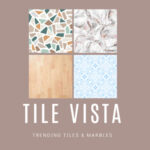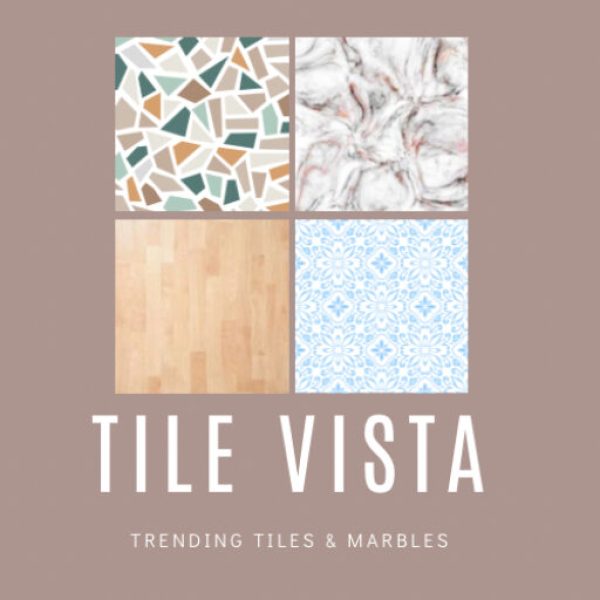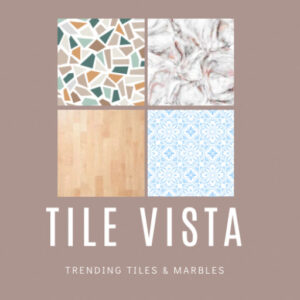10 Best Marble Tile Ideas to Elevate Your Home Design
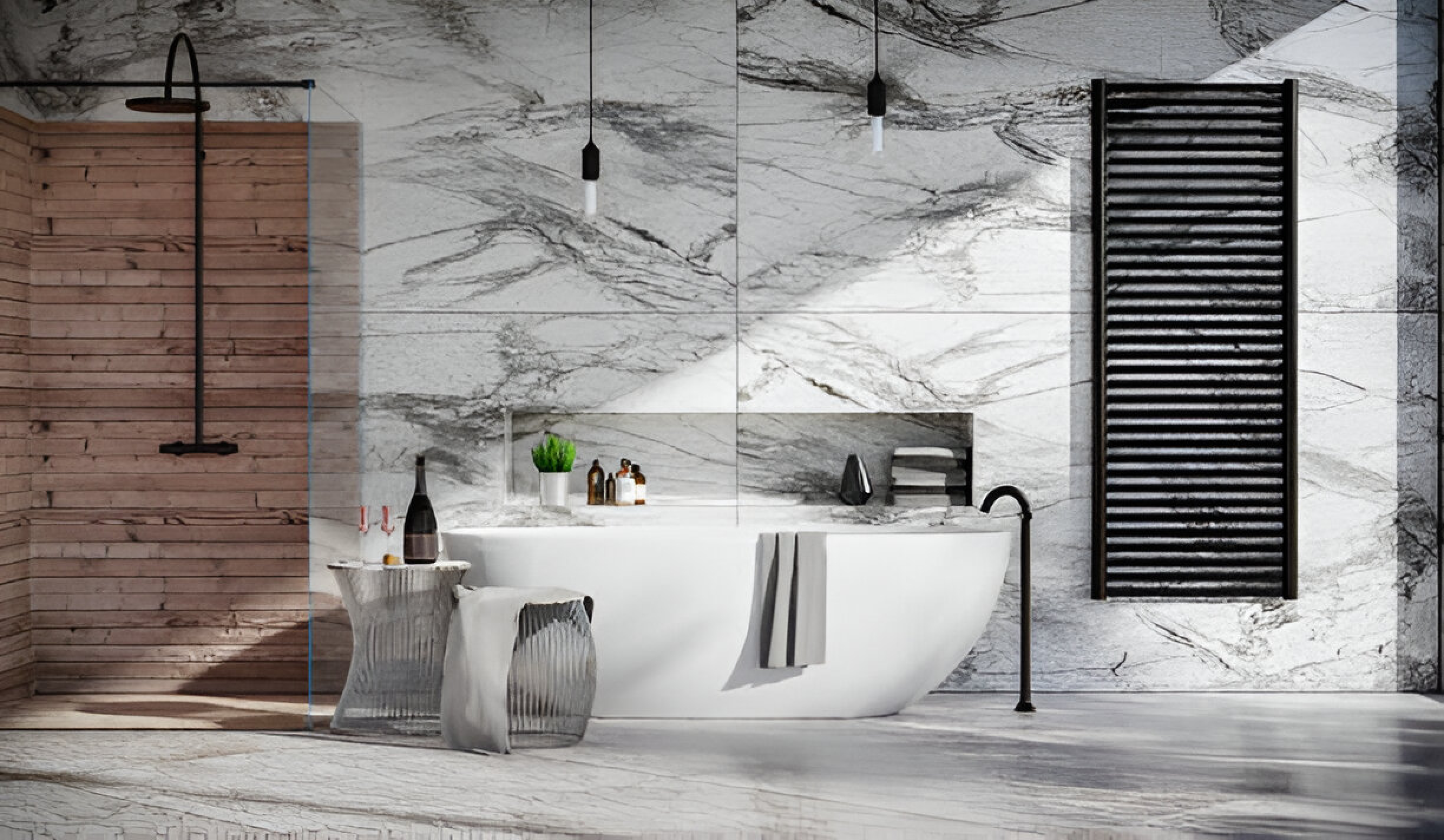
For numerous centuries now, marble tile deisgns have been the epitome of elegance and beauty. Their natural luster, combined with rugged properties, makes them the superior choice for people who seek to improve their interior design. Whether you want to make a bold statement or build a tranquil, refined atmosphere in your home, marble tiles will never fail to deliver. In this post, we will examine 10 marble tile ideas that will convince you to remodel your house while providing guidance on how to do it right.
Classic White Marble
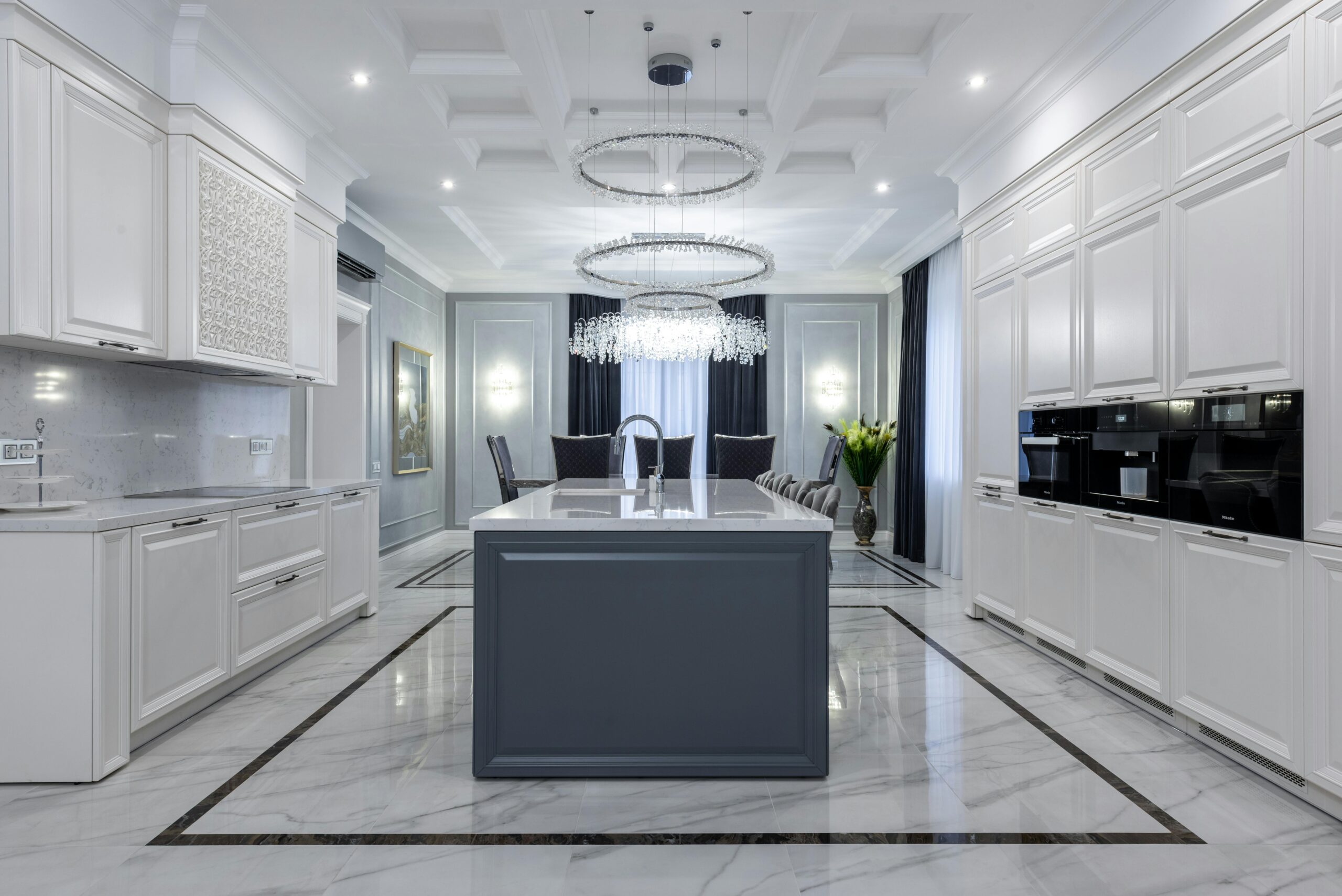
For centuries, white marble has been the symbol of opulence. Used to cover the floors of grand palaces and mansions, its brilliant, polished facade reflects light and makes any room appear larger, brighter, and more airy. Carrara, Calacatta, and Statuario marble are the most popular types of marble. Each one has its particular veining tone and form. Carrara marble, for instance, is widely used for its softer, less distinct veining, whereas Calacatta marble has much bolder, more striking veining, making it suitable for bold-themed presentations.
White marble can be used for a number of interior design solutions, including kitchen and bathroom walls, living room flooring, and more. Paired with golden or silvery metallic colors like brass or chrome, it radiates an air of luxury and finesse.
Best Used For: Bathroom and kitchen walling, kitchen backsplashes, countertops, flooring.
Pro Guide: Perform regular checks to see if your tiles need any sealing or polishing to keep them looking fresh for years.
Herringbone Marble Tile
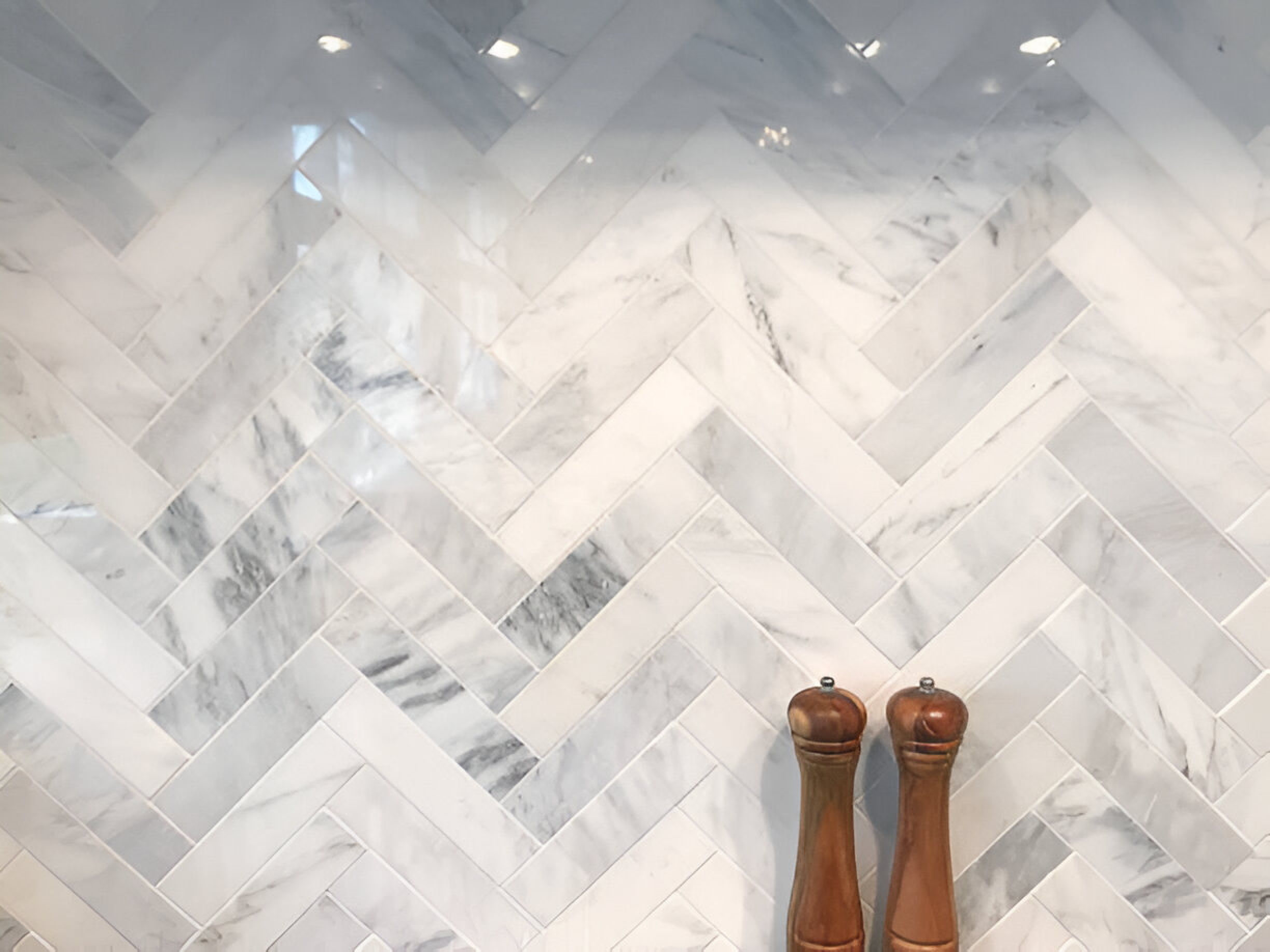
This is a classic tile pattern that never fails to add visual appeal to your space. This zigzag or chevron arrangement of marble tiles implies a sense of movement and contributes to a dynamic and pristine appearance. Consequently, just as in the case of running bond, herringbone layouts create interest and can be used in smaller spaces, such as kitchen backsplashes or bathroom floors.
Moreover, herringbone is quite versatile: whether you want to use bigger or smaller tiles, this pattern can accommodate different layouts and complements both modern and traditional designs. However, if you want to make a statement and achieve a career finish, you might want to choose tiles with contrasting veining or shades of grey.
Best Used For: Kitchen backsplashes, shower walls, entryways, and accent walls.
Pro Tip: Opt for contrasting grout to create an outstanding look and emphasize the intricate design of the herringbone pattern.
Marble Mosaic Tiles
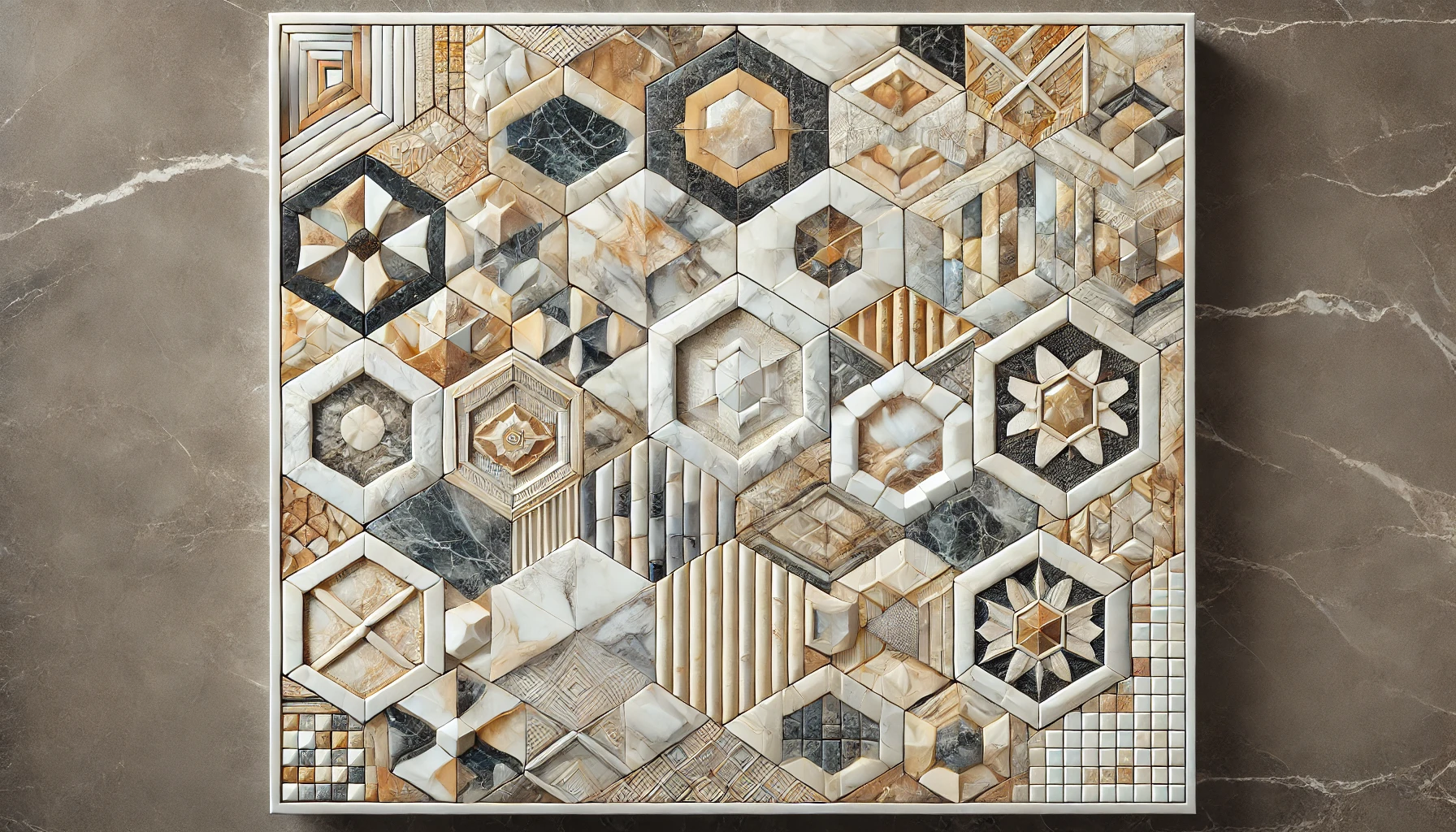
These are versatile as they can be used either to complement a lavish theme or create a luxurious focal point in bathrooms or kitchens. Moreover, their intricate design is brought to life by the combination of smaller tiles available in various shapes, such as hexagons, arabesques, and basketweaves. The natural veining of marble contributes to the mosaics’ depth and adds an interesting texture to the mix.
Additionally, due to their small size, marble mosaic tiles are quite suitable for shower floors or borders that can be used to define other tile patterns. Not only do they provide depth, but their textured surface may also be much slipperier.
Best Used For: Shower floors, bathroom walls, and decorative niches.
Pro Tip: Add more layers to the design by mixing different shades of marble within your mosaic.
Black and White Marble Tile

For graphic souls, the combination of black and white marble tiles guarantees a killer look. The classic play of contrasts can take the shape of a checkerboard or any other creative design for a modern feel. Black and white marble tiles look particularly good in places where you want to make a grand entrance (quite literally), such as entry halls, kitchen floors, and even bathroom walls.
The elegance of the most noble stone increases by the classic combination of black and white, so the overall look is both timeless and modern. Want to take the drama one step further? Go for high-gloss polished finishes that will glow in the dark and reflect all peculiar architectural details of the room.
Best Used For: Kitchen floors, living room feature walls, entrance halls.
Pro Tip: For a sleek and modern look, go with bigger tiles. If you prefer a more intricate, traditional style, choose smaller tiles.
Marble Subway Tiles
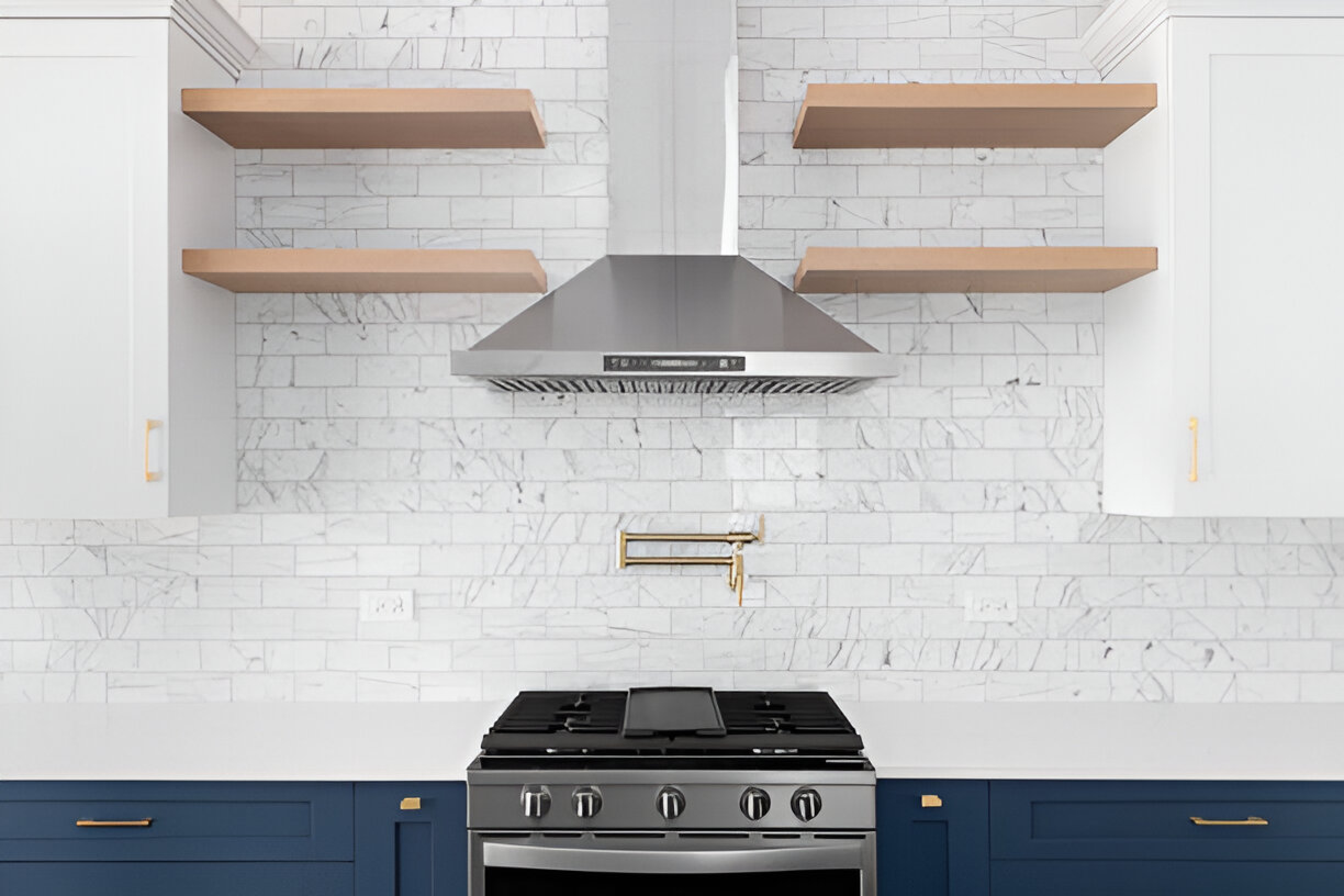
Subway tiles have been around for quite some time now and look as good as ever. If you want to add a dash of elegance to a modern living space or upgrade the time proven design of a traditional home, you can’t go wrong with the lush richness of marble subway tiles. Featuring that familiar shape and size, they are much easier to place and fit in both modern and traditional designs.
The natural veining of marble gives your tiles a unique, luxurious flair that simple ceramic designs lack, meaning that you can use them to add a subtle elegance to your kitchen backsplash or create a peaceful and calming ambience in your bathroom. Help them to shine by pairing them with neutral tones or making a huge splash with metallic details!
Best Used For: Kitchen backsplashes, bathroom walls, laundry areas.
Pro Tip: Rarely use herringbone or a vertical pattern instead of the traditional horizontal layout.
Hexagon Marble Tiles
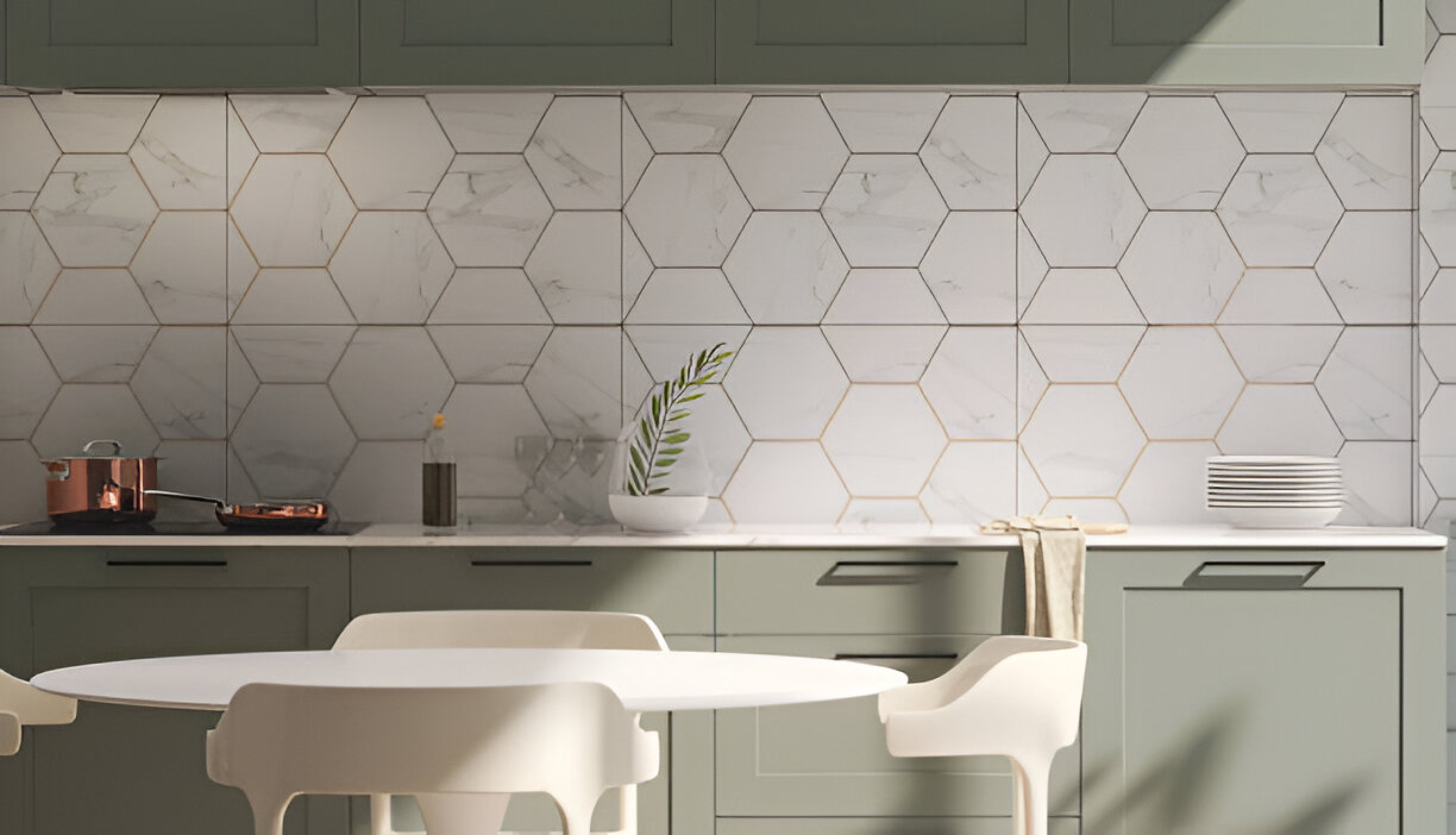
One type of marble tile with which we’ll start our selection is marble hexagon tiles. These original tiles often take on a honeycomb shape, and while it may be a large single tile, it is more common to find them as small hexagons. The uniqueness of this tile is that it covers a very interesting geometric pattern that will add charm to any modern or transitional design on the floor or walls. Depending on the size of the marble hexagon, the design can be either subtle or very graphic.
In fact, despite the straight lines of the shape, the natural veining of the marble gives such a tile an organic softness that combines structure and beauty. Choose large-format hexagon tiles in a neutral hue for a more modern look.
Best Used For: bathroom floors, shower walls, and kitchen backsplashes
Pro Tip: Select tiles with contrasting colored grout to highlight the geometric pattern, or tiles with the same hue for a more seamless look.
Large Format Marble Tile
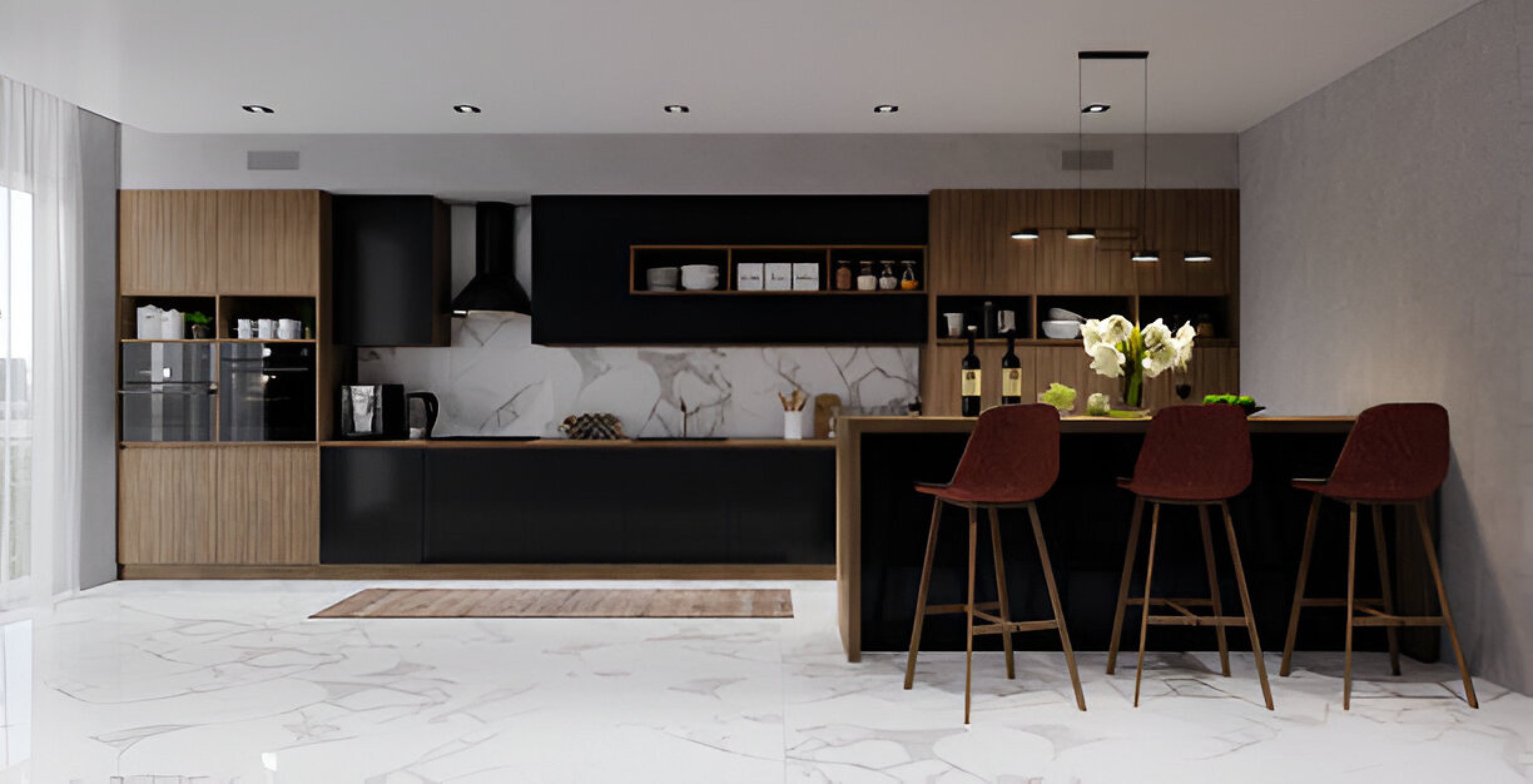
Another top trend is large format tiles that are often used for flooring in spacious living rooms and large kitchens. The obvious advantage is the low number of joints, which does not divide the marble surface and can be impressive in its beauty. These tiles are also suitable for finishing the bathroom walls, making even a small room look visually more spacious. The solid floor produced with such tiles has an understated elegance that is always in fashion. For a luxurious finish, look for the highest quality marble for the best results.
Best Used For: living room floors, bathroom walls, and kitchen floors.
Pro Tip: Choose large floor tiles in neutral shades such as beige, gray, or white.
Veined Marble Tiles
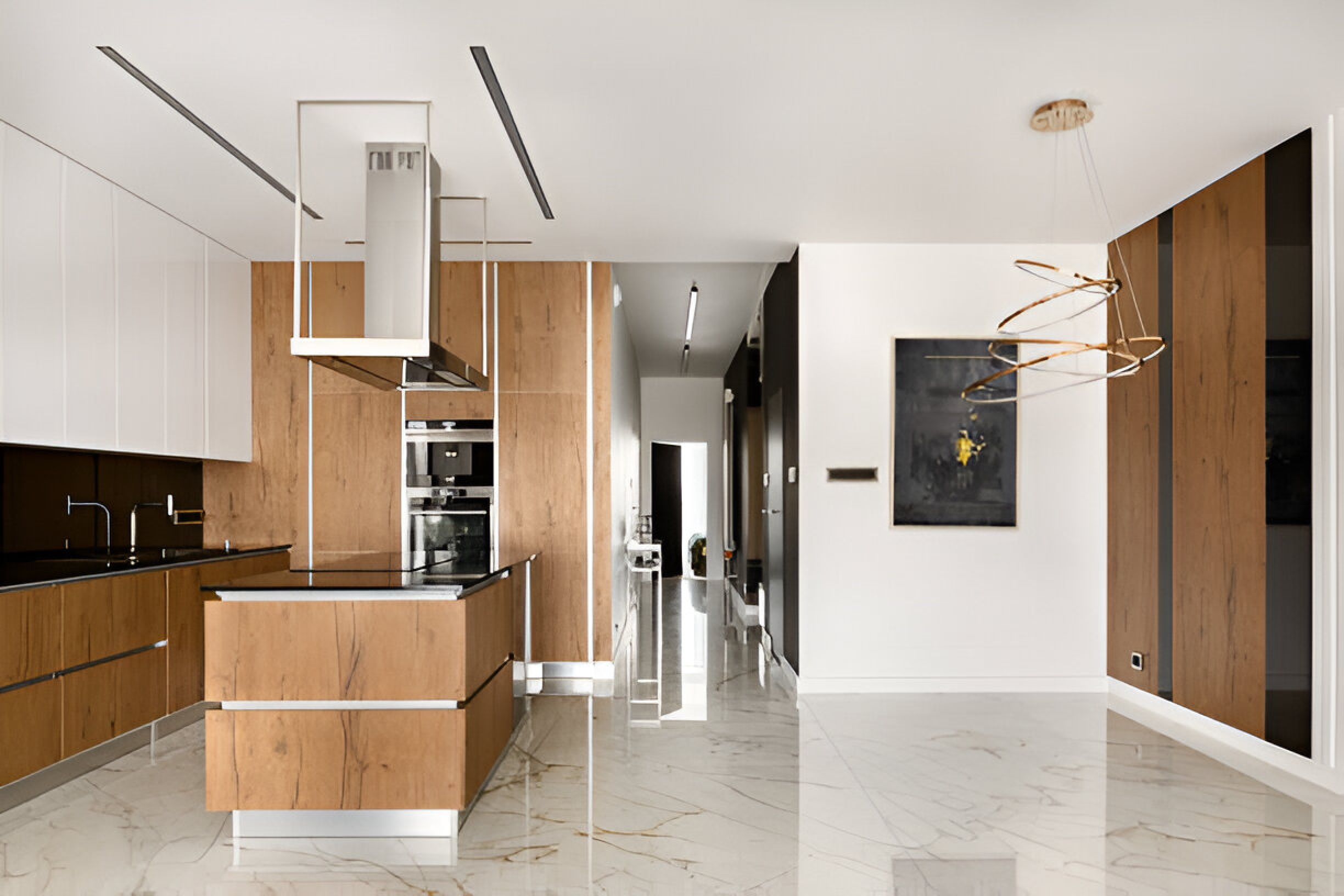
Marble tiles with striking, bold veining have always been an artistic design that helps to create a spectacular focal area in your home. The particular patterns on this type of marble vary completely from one stone to another, which makes each tile an individual work of art. You may choose subtler grey veining or opt for a more dramatic effect with golden and black veining. All in all, you will give an outstanding touch to your space by placing veined marble both on walls and floors, creating luxurious and expressive rooms and halls in your house.
Best Used For: Statement walls, beautiful floors, and fireplace surrounds.
Pro Tip: Keep your veined marble wallpaper the central focus of the space and don’t try to overload it with multiple decorative elements.
Textured Marble Tile
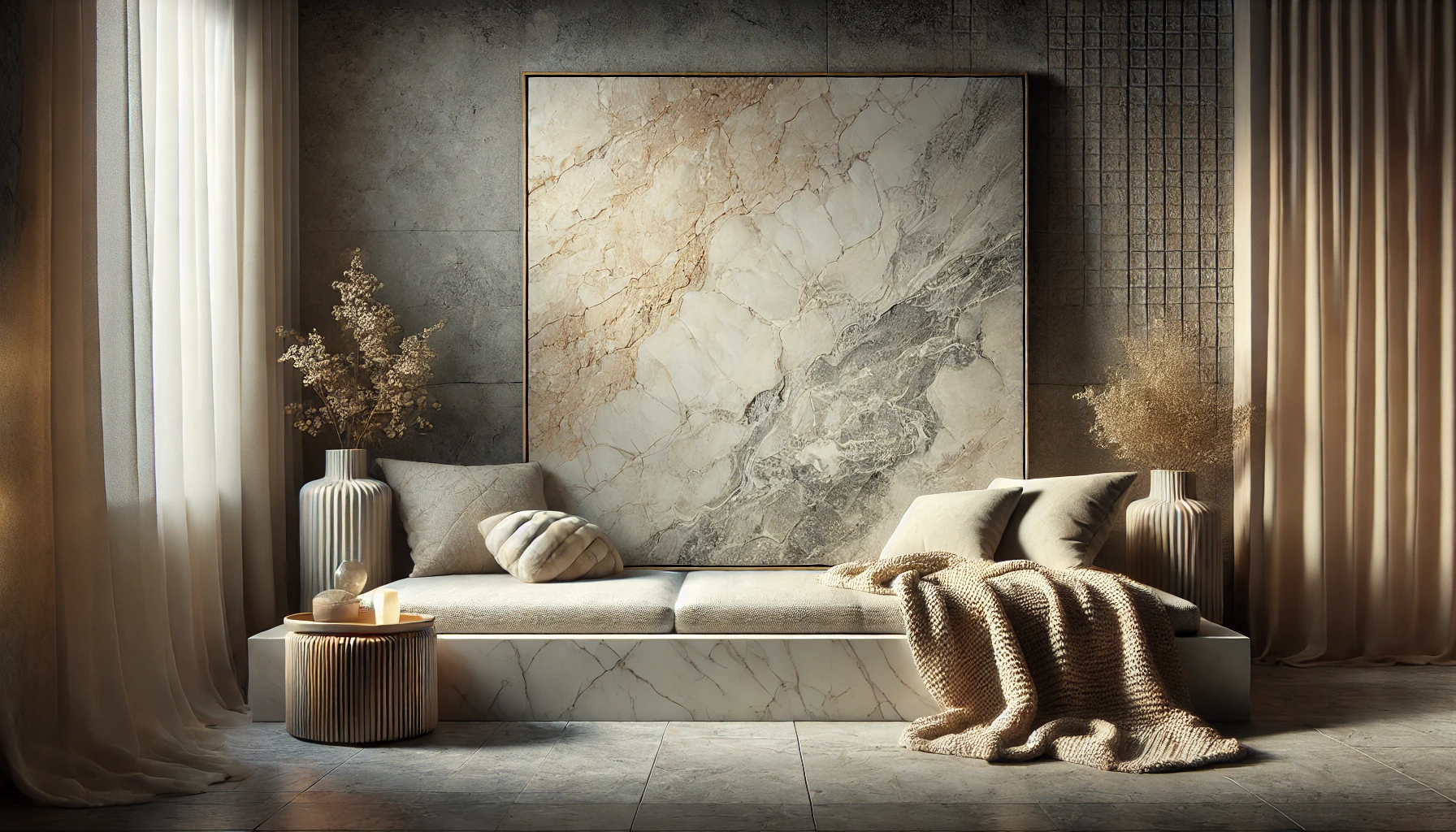
To add more depth and visual interest to the design of a space, you may employ textured marble tiles, such as a honed or tumbled finish. It will give the rooms an absolutely different organic look due to the fact that the polished surface of the traditional marble tile would be replaced by either honed or tumbled types of finish. Such tiles will be an excellent variant, especially for spaces where you would like to create a heartwarming and cozy atmosphere, such as your bathroom floor or the outdoor patio. As for the textured type, honed marble provides a much softer appearance, while the tumbled finish makes the tiles look aged, weathered, and imperfect.
Best Used For: Bathroom floors, outdoor patios, and small accent walls.
Pro Tip: Combine textured marble tiles with other natural materials, such as wood or natural minerals.
Colored Marble Tiles
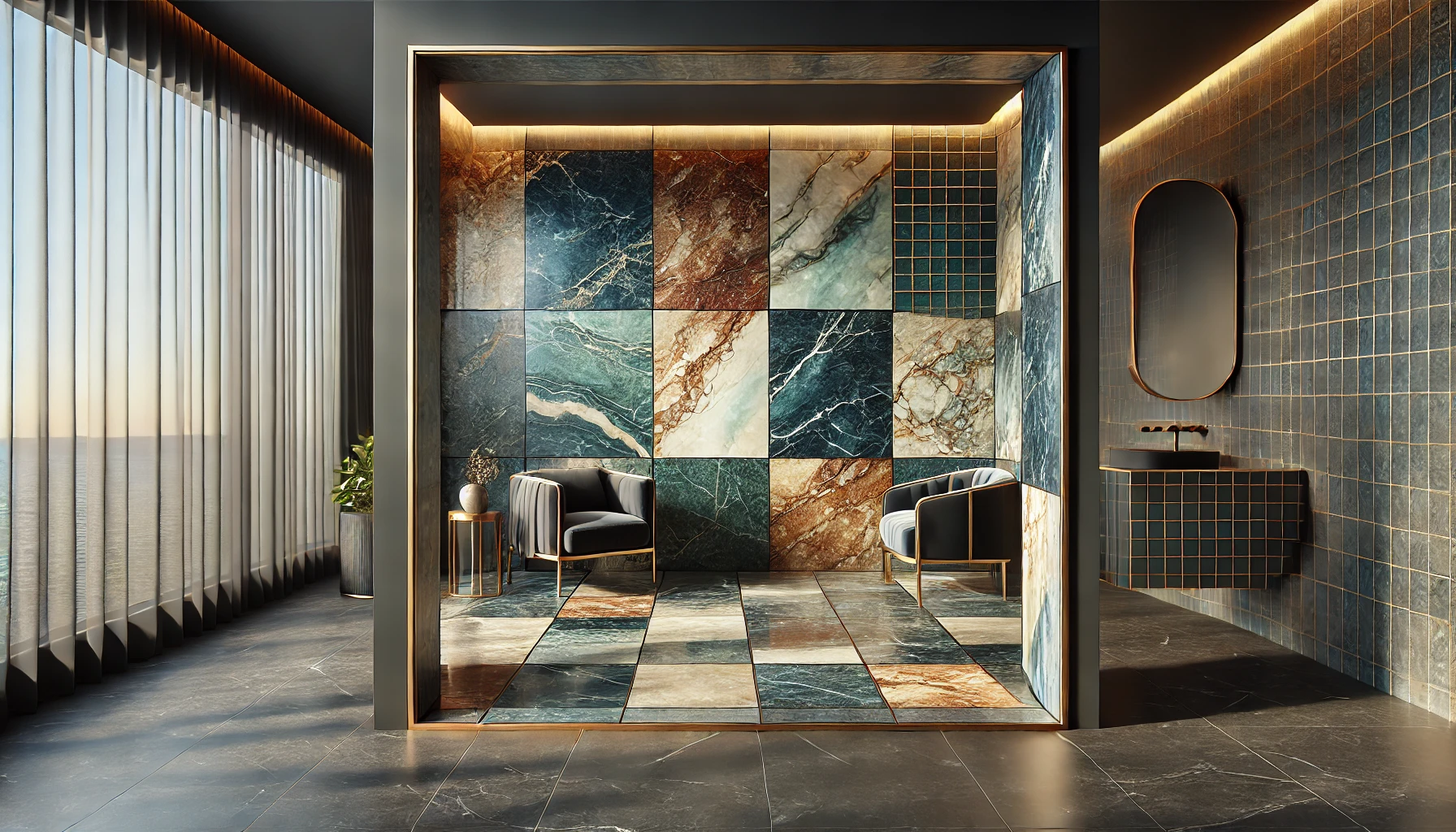
Colored marble tiles are a great option for homeowners who not only want the luxury and elegance but also want to make a statement. While white and grey are popular options, you can also find pink, blue, green, and many other vibrant hues to suit your needs. That said, bright and bold colors should be used correctly and typically not in large quantities. For example, you can use these tiles to renovate your powder room, create a feature wall in your living room, or enliven your bathroom vanity. You can team colored marble with soft tones to emphasize the stone’s inclination, making it look luxurious without being overwhelming. I personally would not use this type of marble on an entire wall or floor but would rather stick to my favorite pink marble slab or a powder room vanity.
Best Used For: Powder rooms, Feature walls, Bathroom vanities
Pro Tip: Use colored marble sparingly to make a statement and complement it with neutral tones to keep the space sophisticated.
FAQs
Q: Are marble tile a good investment for my home?
A: Absolutely, marble tiles will substantially increase your home’s value since they are extremely upscale and durable. Plus, their timeless beauty makes them an attractive addition to a home, especially a luxurious one.
Q: What is the difference between polished and honed marble tiles?
A: While polished marble has a reflective surface appealing to formal spaces like living rooms, honed marble has a matte finish that makes it less slippery. Notably, the latter is also harder to scratch, although it tends to stain easier than polished tile.
Q: What can I do to keep my marble tiles from staining or etching?
A: To protect your marble, seal it every 612 months. Do not use acidic cleaners like vinegar or lemon-based products, as they can cause etching. Instead, use pH-neutral stone cleaners and wipe spills quickly, especially those of acidic substances like citrus juice or wine, to avoid staining or permanently damaging the marble.
Q: Can my marble tile be fixed if they get damaged?
A: Yes, most minor scratches can be polished with a compound. Chipped or more severe scratches may require professional repair. One can remove the stains out of the marble with poultices. If a tile is severely damaged, you can replace it with one matching the rest of the tiles in the installation.
Q: What marble tile is going to suit my home’s style best?
A: Select a marble tile based on your style goals. Classic or traditional interior designs often look best with white marble like Carrara or Calacatta. If you are looking for a more modern style, consider large-format tiles with little veining or geometric shapes like hexagons. To add a modern twist to classic white marble, consider a black and white contrast or a colored marble tile for a bolder look. Moreover, consider the size of the room, its lighting, and the existing decor.
Conclusion
Marble tiles provide an elegant, timeless, and versatile solution for any room in a house. Whether it is classic white or a bold black and white statement, a simple mosaic pattern, or a complex geometric design, marble can help elevate the style of any room. This tiles will make it a truly luxurious space. Natural beauty, high durability, and a variety of finishes are strong arguments in favor of choosing marble for homeowners. This tile is best for them who want to invest in quality, long-lasting, and stylish materials.
